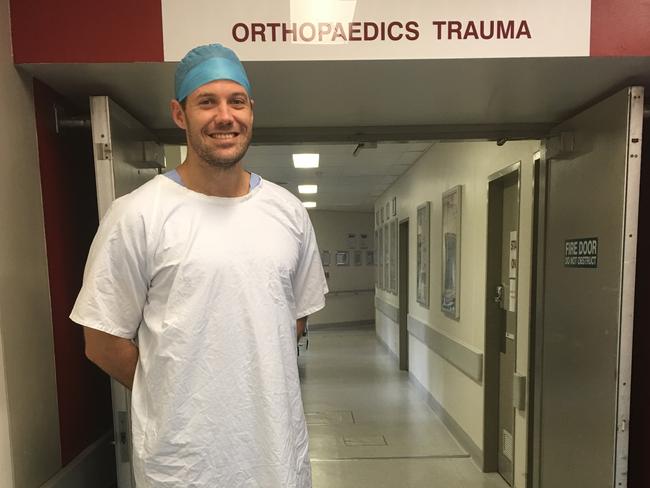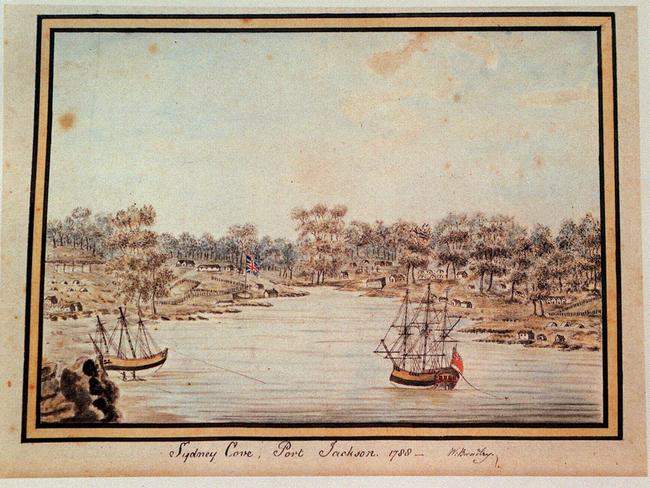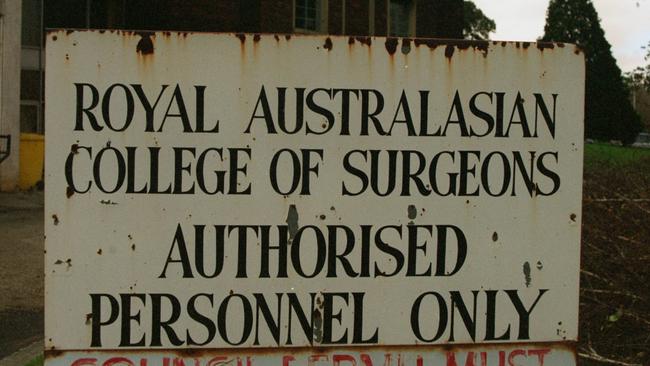Two centuries after the First Fleet no indigenous person has ever had this job
FIFTY years since Aboriginal people won citizenship there is still one profession that no indigenous person has ever gotten into.
THIS is Australia in 2017. Possibly the most multicultural and egalitarian nation on earth.
Yet more than two centuries after colonisation and 50 years since Aboriginal people won full citizenship there is still one profession that no indigenous person has ever gotten into, one job that no indigenous Australian has ever had.
That is, until now.
Meet Anthony Murray. He is about to make history. And until last year he didn’t even know he was doing it.
Almost 230 years since the landing of the First Fleet, Anthony is set to break into what is widely regarded as the toughest branch of the most exclusive profession. He will become Australia’s first indigenous orthopedic surgeon.
Orthopedic surgeons are the marines of the medical world, the surgeon’s surgeon. Some even title themselves “Mr” instead of “Dr” — a quaint reverse snobbery dating back to the time when physicians looked down on surgeons as “bone crunchers”. These days, after 16 years of intensive training, many deliberately keep the “Mr” to remind other doctors just how the tables have turned. It is perhaps the ultimate humblebrag.
Dr Murray, however, needs no such faux modesty. There has literally never been anybody else like him. No other indigenous man or woman has ever made it into this elite set.

Only two fellows of the Royal Australasian College of Surgeons currently identify as being of Aboriginal or Torres Strait Island descent. This is out of 4800 surgeons currently practising in Australia.
Last week Dr Murray and another trainee, who is working in New Zealand to become an otologist, won the RACS Aboriginal and Torres Strait Islander SET Trainee One Year Scholarship — an event that went almost entirely unreported, despite its catchy title.
Once Dr Murray completes his training to become an orthopedic surgeon he will have smashed through what is arguably the highest — not to mention palest — glass ceiling in the land.
He estimates thousands of people each year apply for the general surgical exam, which most fail, and after that there is another barrier exam for orthopedics which “multiple hundreds” sit for and only around 50 pass.
“I’m 11 years into a 16 year trek,” he tells news.com.au. “And that’s the fastest you can do it!”
And yet it was only last year that his colleagues at the Australian Indigenous Doctors Association figured out he would be the first Aboriginal person to ever achieve it.
“To hear I would be the first, I was gobsmacked,” he says. “It just boggles the mind.”

Gobsmacked not because he thought he was remarkable, but because he couldn’t believe that after more than two centuries there was still a profession that no indigenous person had ever entered.
“I wear it as a badge of honour but also as a sad realisation of how long it’s taken for this to become a reality at all.”
Even in the field of surgery as a whole Dr Murray can count on the fingers of one hand the number of other indigenous doctors. Again, literally on one hand.
Yet Dr Murray himself almost fell into it by accident. At 18, he dropped out of medical school and ended up playing club AFL footy, but as fate would have it, he smashed his knee. As he went through the treatment to fix it, he realised he liked the orthopedic surgeons he was meeting and admired their ability to so quickly transform people’s lives.

With eye-watering discipline, he returned to medical school and banned himself from a mobile phone or even a laptop in an effort to focus entirely on his study.
“I’m not a natural student,” he says. God help the rest of us then.
At seven foot tall and 130 kilograms Dr Murray says he hasn’t personally encountered any racism in the medical profession — “I don’t think too many people would say too much to me!” In fact he has been overwhelmed by the level of support.
However he has sometimes heard hospital staff use disparaging stereotypes about Aboriginal patients, whereupon he gently informs them that he is indigenous himself. Again, being seven foot and 130kg, this is “a good shut up” he laughs.
True, even two centuries later Australia still has a fractured relationship with its first peoples. But, as every good surgeon knows, even the worst breaks can be mended.




